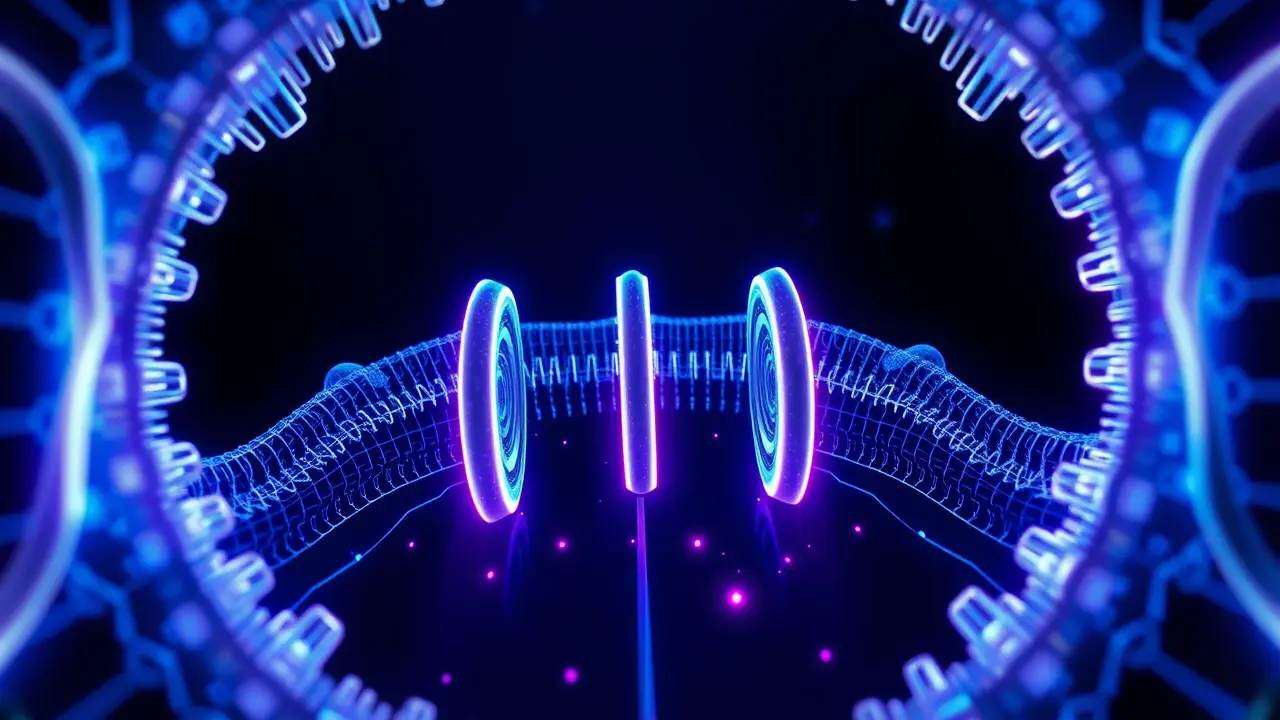
Scienceneuroscience
Bacterial Nanopores Exhibit Brain-Like Learning and Memory
KE
Kevin White
3 hours ago7 min read
In a groundbreaking discovery that merges biology with computational theory, scientists from the École Polytechnique Fédérale de Lausanne (EPFL) have uncovered a sophisticated learning mechanism within bacterial nanopores that operates on principles akin to those of the human brain. These molecular channels, common in nature and widely used in biotech, have previously baffled researchers with their unpredictable electrical behaviors—specifically, rectification, where ion flow becomes directionally biased, and gating, which functions like a transistor switching on and off.The EPFL team employed a synthetic biology strategy, engineering different versions of the aerolysin nanopore, a protein originating from disease-causing bacteria. Their research identified that strategically placed electrical charges along the nanopore's interior wall were responsible.As ions such as sodium or potassium move through the channel, they interact electrostatically with these fixed charges, creating energy barriers that either block or permit ion passage, resulting in the observed rectification and voltage-triggered gating. This system is not merely a passive filter but an active, dynamic one.The pivotal advancement came when the researchers used this knowledge to construct nanopores whose electrical conductance could be permanently modified by specific voltage patterns. They engineered a nanopore capable of 'learning' from its electrical past, demonstrating a rudimentary, non-synaptic form of memory.This represents a form of neuromorphic computing—brain-like information processing—achieved not with silicon chips but with a single protein submerged in salt water. This breakthrough elevates nanopores beyond their current roles as sensors or DNA sequencers, positioning them at the forefront of bio-inspired computing.Potential applications include ion-based processors that perform complex pattern recognition with minimal energy, rivaling modern supercomputers. Such technology could enable advanced brain-machine interfaces that communicate in biological terms or adaptive environmental sensors that learn from real-time chemical data.This research, which sits at the intersection of biophysics, nanotechnology, and artificial intelligence, indicates that the next major computing revolution may stem not from advanced fabrication labs but from a deeper comprehension of the molecular systems refined by life over eons. The age of biological computing, or 'wetware,' is now dawning.
#featured
#bacterial nanopores
#brain-like learning
#bio-inspired computing
#ion-based processors
#EPFL research
Stay Informed. Act Smarter.
Get weekly highlights, major headlines, and expert insights — then put your knowledge to work in our live prediction markets.
Related News
© 2025 Outpoll Service LTD. All rights reserved.
